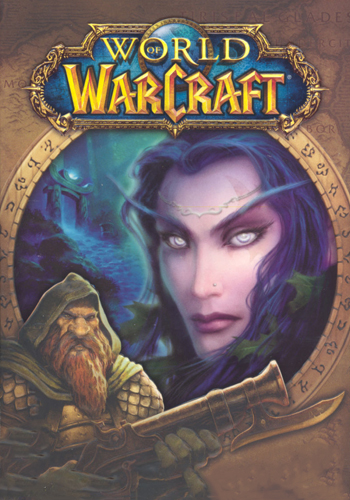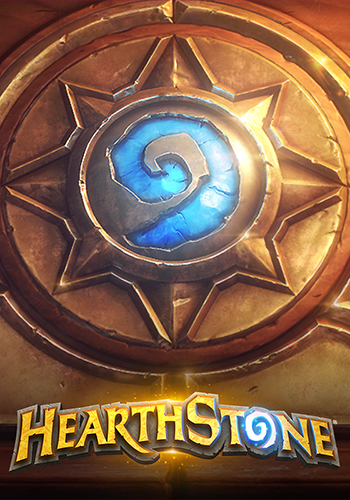World of Warcraft
Moments of brilliance
That's how it was when WoW was launched in 2004 and became a mass MMORPG phenomenon within a few months - and I was so excited about it. The thought of being able to play a game online with other people - virtually playing co-op with hundreds of like-minded people - was like a dream. And it was to stay that way for a very long time due to my lack of internet access. At the time, I could only get my kicks from my buddy Paul, with whom I played until the early hours of the morning after he had gone to bed (usually around 2 a.m., mind you). He basically ran an internet café in his bedroom, with me as the only non-paying customer.
Like World of Warcraft we were pioneers who somehow tried to develop a scheme where everyone would go home happy. Meanwhile, new systems and paying customers are good keywords, because the idea of paying a monthly subscription for gaming was also the reason why I, as a tightwad, never moved up later despite having a data highway at home. Other free-to-play substitutes such as Runes of Magic, Florensia and The Lord of the Rings Online never really made me happy because of the payment barrier. And even with full-price competitor Guild Wars 2 , I ran out of steam relatively quickly.
When WoW also switched to free-to-play and I had leveled up my undead rogue to level 110 in no time at all, I finally understood why it hadn't clicked before: I just don't like MMOs. For all my addictive tendencies, the appeal of World of Warcraft was the novelty of online gaming, the digital community. Apart from that, I never had any desire to grind to get the best equipment or to indulge in PvP through martial training in the arena. I simply missed the idea of some day being the best, being the chosen one - the quintessence of most (singleplayer) video games.
In this respect, I'm glad that I was at least spared this part of the millennial nerd bingo, even if I otherwise ticked all the boxes with an accuracy bordering on self-flagellation. No, I can say that I was able to successfully maneuver around the pull of Blizzard's money-printing machine. At the same time, of course, I am missing the emotional connection to the soundtrack, which is what this review is supposed to be about.
The score was written by Jason Hayes, who as a composer should not be confused with the character of the same name from the SEAL Team series. But even if the composer Hayes didn't make it as an action hero, he should at least have a certain legendary status in the field of game music - or to put it in MMO terms: he is a raid boss when it comes to Blizzard scores. Not only was he previously involved in Warcraft III: Reign of Chaos , he later contributed to StarCraft, various WoW-addons and Dota 2 . The only thing missing is Diablo, to complete the whole list. No matter.
In other words, a heavyweight who played a leading role in establishing the musical direction of an entire franchise. In a series that currently comprises nine expansions, spin-offs such as Hearthstone or Heroes of the Storm and a feature film, the 30-track OST is comparatively straightforward. However, it sets the cinematic tone of the brand, or at least transfers it from Warcraft III to the genre of online role-playing games. But more on that in a moment.
First of all, the WoW OST can be said to be average over long stretches. This is largely due to the fact that it was designed as background music for the various areas and locations. Nice, unagitated humming that gives regions such as Stranglethorn Vale, the Burning Steppes or Elwynn Forest the typical fantasy touch. This works less well with darker pieces such as Tanaris or Felwood, tracks such as Dun Morogh or Teldrassil are quite acceptable with their harp plucking and piano tinkling. And Song of Elune brings back memories of Daggerfall.
Other songs such as Tavern are classic feel-good tunes and, as expected, more love has also gone into the city themes for the various playable factions, such as the bombastic Stormwind for the humans, the warlike and snotty Ironforge for the dwarves or the grim and gloomy The Undercity for the air-polluters. This makes us happy every time we walk through the more or less large gates of the respective nation or sit down to log out in the tavern.
"But Mattis, how can you talk about mediocrity with World of Wacraft ? Many of the songs are genre classics that appear in various best-ofs and are played up and down at concerts!" Justified, albeit premature criticism. Because I used the phrase "average for long stretches." What distinguishes World of Warcraft and Blizzard games as such are the cutscenes. They spin a story in graphic opulence that only die-hard fans can really follow these days. Meanwhile, their content is always a masterpiece of staging - and the music is in no way inferior. However, as the main task in 2004 was to make this game playable in the first place, we find the fewest cutscenes here compared to the addons.
What we can already hear, however, are the powerful drums from Legends of Azeroth, which thump towards us when we log in and are likely to send a shiver down the spine of every fan. The Shaping of the World on the other hand, features the typical Warcraft-theme, played by strings, which bounces around in competition with the orchestra before being replaced by wind instruments. This exudes a wonderful retro charm (after all, it was 19 years ago, so we can talk about retro) and culminates in heroic sounds that accompany us into battle.
We have a similar experience in A Call to Arms, which fans may recognize from the cinematic trailer for Warcraft III . Here we also hear the Warcraft-theme, even if this time it is hidden behind Halo-like, sustained vocals and spherical drum reverberations, before it breaks out and - somewhat cheesily - calls for an onslaught. Not a favourite for everyone, but for me it fulfills the requirement of being worth listening to.
And with that, I would like to end this review for the main game. Unfair, you might think, given that I sometimes say a lot more about supposedly less important games. Finishing the genre primus World of Warcraft after only 1060 of them? I would like to counter this by saying that everything about the game has been very well documented due to its popularity. You can find much more in-depth analysis and explanations of the individual pieces on various fan pages. Since, as described above, I have little connection with the game and I hate repetition, I lack the determination to go into any more detail. My recommendation for the OST clearly falls on the cutscene music. The rest is average. But it doesn't end here, because the various expansions are still to come!
| No. | Title | Artist(s) | Ratings |
|---|---|---|---|
| 01 | Legends of Azeroth | Jason Hayes | |
| 02 | The Shaping of the World | Jason Hayes | |
| 03 | Legacy | Jason Hayes | |
| 04 | Song of Elune | Jason Hayes | |
| 05 | Echoes of the Past | Jason Hayes | |
| 06 | A Call to Arms | Jason Hayes; Glenn Stafford | |
| 07 | Intro Movie: Seasons of War | Jason Hayes | |
| 08 | Stormwind | Jason Hayes | |
| 09 | Orgrimmar | Jason Hayes | |
| 10 | The Undercity | Derek Duke | |
| 11 | Thunder Bluff | Glenn Stafford | |
| 12 | Darnassus | Jason Hayes | |
| 13 | Ironforge | Jason Hayes | |
| 14 | Elwynn Forest | Jason Hayes | |
| 15 | Duskwood | Jason Hayes | |
| 16 | Dun Morogh | Jason Hayes | |
| 17 | Burning Steppes | Jason Hayes | |
| 18 | Shimmering Flats | Jason Hayes | |
| 19 | Felwood | Derek Duke | |
| 20 | Stranglethorn Vale | Jason Hayes | |
| 21 | Tanaris | Tracy Bush | |
| 22 | Teldrassil | Jason Hayes | |
| 23 | Tavern | Jason Hayes | |
| 24 | Moonfall | Jason Hayes | |
| 25 | Ruins | Jason Hayes | |
| 26 | Temple | Jason Hayes | |
| 27 | Lurking | Jason Hayes | |
| 28 | Sacred | Jason Hayes | |
| 29 | Graveyard | Jason Hayes | |
| 30 | War | Jason Hayes |





One Comment
Muhter Mähbringer
Elune-adore Shando,
Diese Review kitzelt meine Kurzweiligkeit mit Freuden. Kein Wort ist überflüssig wie einst Addons nach WOTLK und keine Redewendung übertrieben opulent, wie einst die Cutscenes, bevor man dann mit dem mäßigen Polygoncharakter Wölfe vermöbelt.
Ishnu-dal-dieb